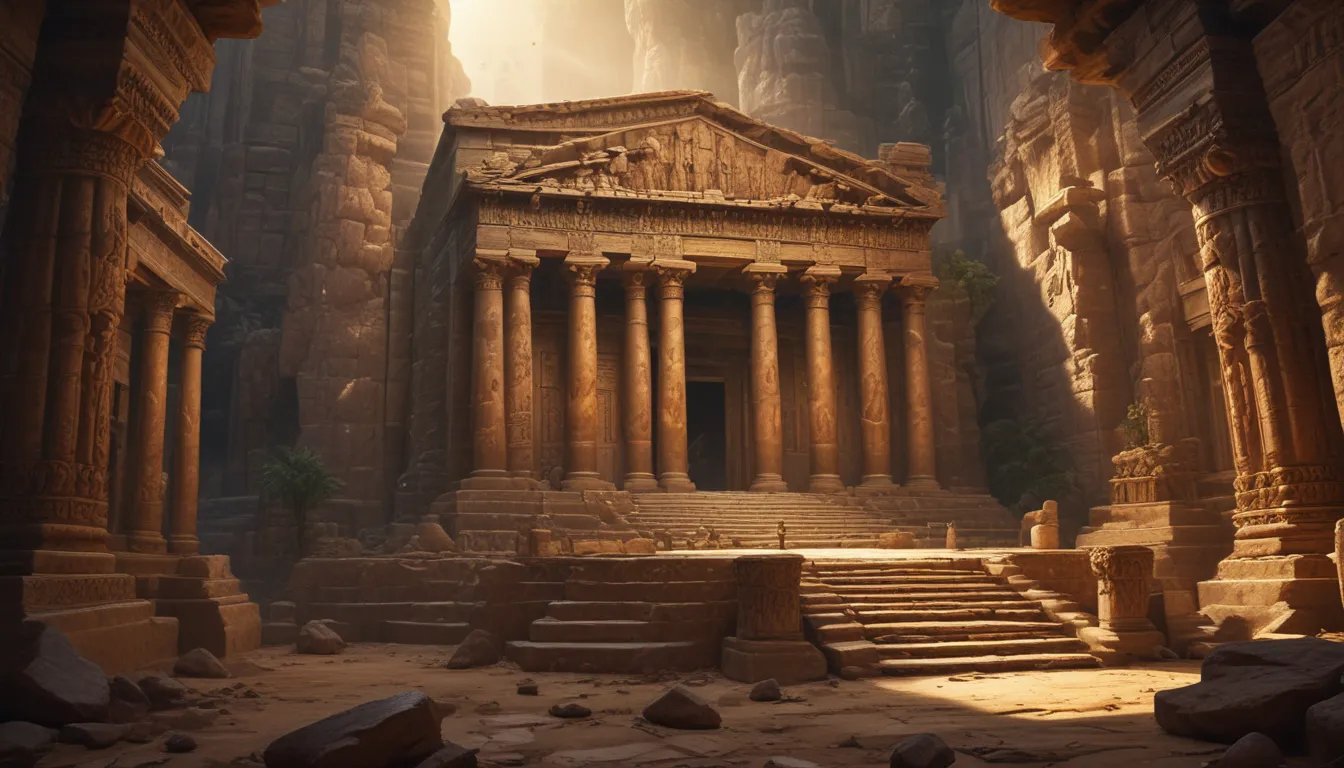The images in our articles may not match the content exactly. They are used to grab your attention, not to show the exact details in the text. The images complement the text but do not replace it.
Have you ever been curious about the enigmatic grandeur of Solomon’s Temple, an architectural marvel that has captivated minds for centuries? From its construction under King Solomon’s command to its symbolic significance in the Israelite kingdom, Solomon’s Temple, also known as the First Temple, holds a plethora of secrets waiting to be discovered. Join us on a journey through time as we delve into the world of ancient wonders and unveil the captivating facts surrounding this historical masterpiece.
The Enigmatic Solomon’s Temple: A Historical Marvel
Solomon’s Temple stands as a testament to the ingenuity and faith of ancient civilizations, offering a glimpse into a bygone era of architectural splendor and religious devotion. Constructed in ancient Jerusalem around the 10th century BCE by King Solomon, this magnificent structure served as a sacred space to house the revered Ark of the Covenant, containing the original tablets of the Ten Commandments. Beyond its religious significance, the temple symbolized the unity and strength of the Israelite kingdom, leaving an indelible mark on history.
Unraveling the Key Features of Solomon’s Temple
1. Construction:
Solomon’s Temple was a monumental undertaking that required seven years to complete, showcasing the dedication and resources invested in its creation. The meticulous craftsmanship and attention to detail reflected the importance of this architectural endeavor, setting a high standard for religious structures to come.
2. Design:
Inspired by Tyrian temples and influenced by Phoenician architecture, Solomon’s Temple boasted intricate details and lavish materials. From the use of cedar wood imported from Lebanon to the abundance of gold from Ophir, every element of the temple’s design exuded opulence and grandeur, befitting its sacred purpose.
3. Purpose:
More than just a place of worship, Solomon’s Temple served as a central hub for administering the laws of the land and safeguarding the nation’s wealth. It was a treasury of both material riches and spiritual significance, embodying the essence of Israelite culture and tradition.
The Sacred Role of the Ark of the Covenant
1. Sacred Chamber:
At the heart of Solomon’s Temple lay the Holy of Holies, a sacred chamber designed to house the Ark of the Covenant. Accessible only to the high priest and visited once a year on Yom Kippur, this inner sanctum was a place of profound reverence and spiritual connection for the ancient Israelites.
2. Symbolism:
The presence of the Ark within the temple symbolized the enduring covenant between God and the Israelites, serving as a tangible reminder of their special relationship and divine protection. It was a powerful symbol of faith and devotion, central to the religious life of the ancient kingdom.
The Temple’s Demise and Enduring Legacy
1. Destruction:
In 586 BCE, the Babylonians, under King Nebuchadnezzar II, razed Solomon’s Temple to the ground, marking a pivotal moment in Jewish history. The temple’s destruction signaled the beginning of the Babylonian Exile, a period of exile and upheaval that shaped the future of the Israelite people.
2. Reconstruction Efforts:
Despite the temple’s demise, its legacy endured through the subsequent rebuilding of the Second Temple, albeit on a smaller scale. The Second Temple, constructed approximately 70 years later, carried on the traditions and spiritual significance of its predecessor, albeit with diminished splendor.
3. Archaeological Significance:
While physical remnants of Solomon’s Temple are scarce due to religious sensitivities and political tensions in Jerusalem, textual sources like the Hebrew Bible offer detailed descriptions of its design and significance. Archaeological research continues to shed light on the temple’s historical importance and architectural brilliance.
The Enduring Cultural and Religious Impact
1. Influence on Architecture:
Solomon’s Temple left a lasting imprint on religious architecture, inspiring the design of synagogues and churches around the world. Its influence transcended centuries, shaping the aesthetic and spiritual elements of sacred spaces across diverse cultures and traditions.
2. Spiritual Significance:
For the Jewish community, Solomon’s Temple remains a symbol of ancient sovereignty and religious devotion, commemorated in festivals like Hanukkah and Tisha B’Av. Its memory is preserved through rituals and teachings that honor its place in Israelite history.
3. Artistic Inspiration:
The magnificence of Solomon’s Temple has inspired artists and writers throughout history, symbolizing themes of faith, loss, and restoration. From literary works to artistic depictions, the temple’s legacy lives on in the creative expressions of those who continue to be captivated by its allure.
Delving into Mysteries and Theories Surrounding Solomon’s Temple
1. Treasure Trove:
Legends abound regarding the treasures housed within Solomon’s Temple, including the elusive Ark of the Covenant. Stories suggest that these precious artifacts were hidden to protect them from would-be invaders, sparking intrigue and speculation about their fate.
2. Theories of Relocation:
The whereabouts of the Ark of the Covenant have long been a subject of debate and mystery. Some theories propose that it was taken to Ethiopia for safekeeping, while others speculate that it remains concealed beneath the Temple Mount, awaiting discovery.
3. Freemasonry and Symbolism:
Solomon’s Temple holds a prominent place in Freemasonry, where it serves as a symbol of moral and spiritual enlightenment. Freemasons draw upon the temple’s construction as an allegory for personal growth and the pursuit of higher knowledge, embodying timeless principles of wisdom and virtue.
4. Enigmatic Legacy:
Despite centuries of research and exploration, many aspects of Solomon’s Temple remain shrouded in mystery, fueling fascination and curiosity among scholars, believers, and conspiracy theorists alike. The enduring allure of this ancient marvel continues to captivate the imagination and spark new avenues of exploration.
Reflecting on the Timeless Appeal of Solomon’s Temple
As we conclude our journey through the intriguing facts and legends surrounding Solomon’s Temple, we are reminded of its enduring legacy as a beacon of faith, unity, and divine connection. From its construction under King Solomon’s reign to its eventual destruction and ongoing mysteries, the temple remains a testament to the resilience and vision of ancient civilizations.
Whether you are drawn to its architectural splendor, spiritual symbolism, or enigmatic allure, Solomon’s Temple invites us to ponder the complexities and aspirations of humanity through the lens of history. As we traverse the annals of time and uncover the secrets of this ancient wonder, let us embrace the profound lessons and timeless wisdom that continue to resonate from its hallowed halls.
Embracing Trustworthy Knowledge and Exploration
At the heart of our quest for knowledge and discovery lies a commitment to delivering engaging and credible content that illuminates the wonders of the past and present. Each fact and insight shared on our platform is a testament to the diverse perspectives and contributions of our community, ensuring that every discovery is both fascinating and reliable.
As you journey through the realms of history and mystery with us, rest assured that our team of dedicated editors upholds the highest standards of accuracy and authenticity in every piece of information we present. Trust in our dedication to quality and integrity as you embark on your exploration of ancient wonders and timeless truths.






